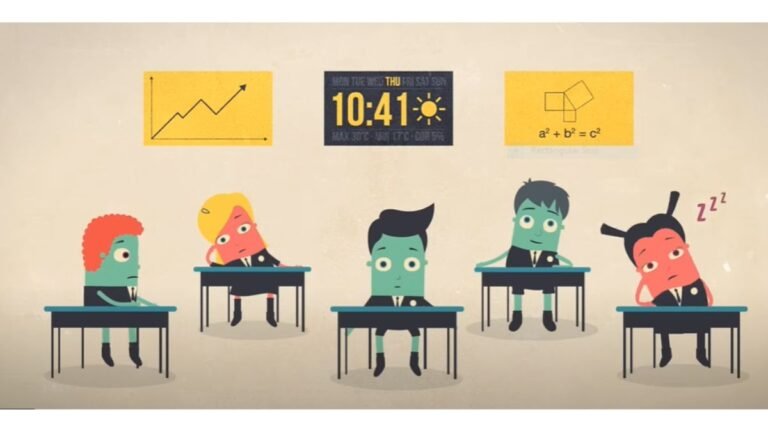From Traditional Classrooms to Virtual Schools: The Evolution of Education in the Digital Age
Over the past few decades, the educational landscape has drastically changed, moving from traditional classrooms to virtual learning environments. Technological developments, shifting social demands, and an increasing awareness of the potential of digital learning to improve educational results have all contributed to this change. Examining this development further reveals that the digital era has changed not just the way that education is provided, but also its reach and accessibility, hence transforming the nature of learning in the future.
The Customary Classroom: An Historical Overview
The foundation of education has historically been traditional classrooms, which are defined by in-person interactions between teachers and students in a physical setting. This ancient paradigm is based on defined curricula, scheduled instruction, and direct instruction. In order to promote social contact, teamwork, and a feeling of community—all of which are crucial for holistic development—teachers and peers must physically be present.
The conventional classroom paradigm is not without its drawbacks, though. One-size-fits-all scheduling can be inflexible, and it could not meet all of the children’ varied learning demands. Many people also have limited access to high-quality education due to socioeconomic and geographic constraints, especially in rural or underdeveloped areas. The search for more adaptable and inclusive educational methods has been fueled by these constraints.
The Arrival of Electronic Education
Education has undergone a revolution with the introduction of digital learning, which has eliminated boundaries based on time, place, and socioeconomic background. When computers and educational software were first introduced into classrooms, the integration of technology into education started off slowly. The opportunities for digital learning have increased dramatically over time because to the internet and mobile technology.
Anyone with an internet connection can access a vast array of courses and materials through e-learning portals like Coursera and Khan Academy. These platforms facilitate self-paced learning by offering interactive content such as forums, videos, and quizzes. Students can study at their own speed with e-learning, which is flexible enough to accommodate a variety of schedules and learning styles.
The Development of Online Learning
The next phase of educational advancement is represented by virtual schools. These universities offer their courses fully online, frequently combining recorded lectures, interactive assignments, and in-person instruction. Virtual schools come in two flavors: totally online or blended, with sporadic in-person instruction mixed together with online coursework.
The capacity of virtual schools to offer individualized learning experiences is one of its main advantages. Artificial intelligence (AI) algorithms and sophisticated learning management systems (LMS) can monitor student progress, pinpoint strengths and shortcomings, and provide customized recommendations. By allowing students to grasp the content at their own pace, this individualized method guarantees a deeper comprehension of the subject matter.
Improving Inclusivity and Accessibility
Education is now much more inclusive and accessible because to the internet era. Students in remote or underprivileged locations can now access high-quality education thanks to virtual schools, which remove geographical restrictions. The versatility and flexibility of online learning environments, which may be tailored to each student’s unique requirements, are also advantageous to students with impairments.
Additionally, online learning options are provided by virtual schools. Adults who want to change occupations or upskill have access to a variety of degree programs and courses without being limited by regular classroom times. The democratization of education encourages a culture of lifelong learning by giving people the ability to continuously advance their knowledge and abilities.
Obstacles and Things to Think About
The transition from traditional classrooms to virtual schools is not without difficulties, despite all of the benefits. The digital divide, or the difference between those who have access to contemporary information and communication technologies and those who do not, is one of the main causes for concern. To prevent escalating already-existing disparities, it is essential to guarantee fair access to digital devices and dependable internet connectivity.
Furthermore, the caliber of digital materials and the technological competence of teachers determine how successful virtual schools are. Teachers must receive professional development and training in order to give them the tools necessary to provide successful and interesting online instruction.
The social component of schooling is another thing to think about. The regulated social contact found in traditional classrooms is essential for the development of emotional intelligence, teamwork, and communication abilities. With the help of extracurricular activities, online discussion boards, and virtual group projects, virtual schools need to come up with creative ways to encourage social relationships among their students.
Education’s Future in the Digital Age
It is obvious that the digital era will continue to influence how education develops as we move to the future. Online learning has become more popular as a result of the COVID-19 epidemic, which has also brought attention to its shortcomings and highlighted its potential. It’s likely that hybrid learning models—which offer flexibility and preserve the advantages of in-person interaction—will proliferate. These models blend the best aspects of traditional and digital learning.
Technological innovations like augmented reality (AR) and virtual reality (VR) have the potential to create engaging and dynamic learning environments. These technological advancements offer opportunity for experiential learning in a virtual setting by simulating real-world situations. Furthermore, personalized learning will be further enhanced by developments in AI and data analytics, which will make it easier for teachers to better adapt their lessons to the specific needs of each student.
In summary
In the history of education, the transition from conventional classrooms to online learning environments represents a critical turning point. The digital era has created new opportunities for learning, increasing accessibility, inclusivity, and personalization of education. Even though there are still obstacles to overcome, digital learning has enormous potential to change education. We can build a world in which every person has the chance to realize their full potential via education by embracing technology and encouraging creative thinking.
For tags :
From Traditional Classrooms to Virtual Schools: The Evolution of Education in the Digital Age
From Traditional Classrooms to Virtual Schools: The Evolution of Education in the Digital Age primomate

